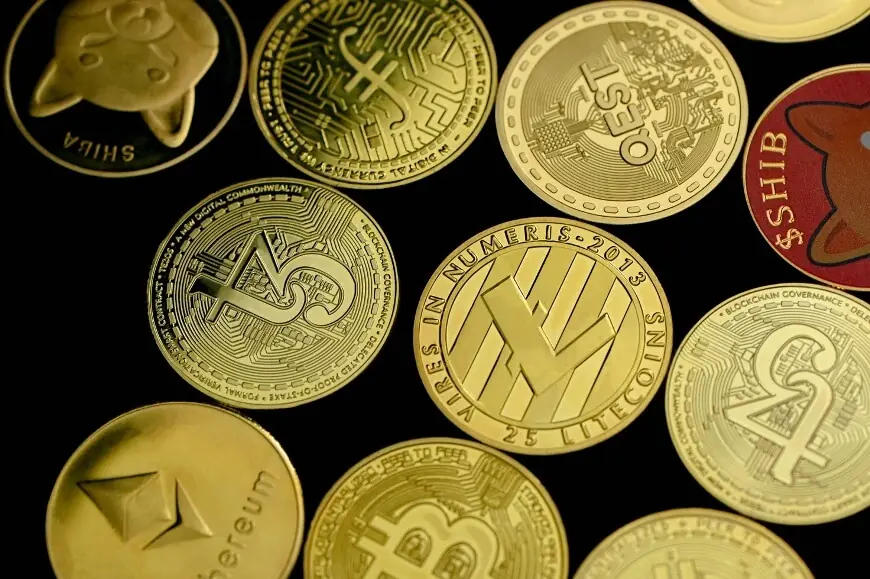

Understanding Cryptocurrency: A Beginner’s Guide to Acquiring Digital Assets
Introduction
Cryptocurrency is a comprehensive payment system that exists solely in the global network. Unlike electronic money, which is an “electronic representation” of conventional money, cryptocurrency has no physical form. It operates independently of any country’s banks for issuance, storage, or transfers from one owner to another.
To issue and receive cryptocurrency, one simply needs to connect to an online service. Connected computers require high power for calculations, a process known as “mining.” Users engaged in mining on their computers are referred to as miners. Earnings in this context are rewards given by the payment system for utilizing the user’s machine’s capacity.
Cryptocurrency is stored in digital wallets and exchanged directly between users. All transaction data is encrypted and stored in an online database to ensure security, hence the “crypto” in the name.
The unit of cryptocurrency is the “coin”. Unlike traditional money, each coin can be divided not only into hundredths (like cents) but also into smaller denominations.
Currently, there are about 1,500 active cryptocurrencies. The most famous and popular among them include:
-
Bitcoin
-
Ethereum
-
Ripple
-
Litecoin
-
among others.
How Do They Work?
At the heart of cryptocurrency is blockchain technology, used for data transmission and secure storage. Essentially, a blockchain is a database with a crucial feature: data can only be added, not deleted.
Here’s a simplified look at the data addition process:
-
The user’s computer generates a transaction (e.g., paying for the Internet, transferring coins from their account to the seller’s).
-
The transaction reaches a network node, which is part of a distributed network of computers with equal rights.
-
Using a series of standard algorithms, the network node confirms the user’s status and the transaction.
-
A series of confirmed transactions forms a digital register block, which receives additional data detailing the transaction’s nature, location, and amount.
-
The new block joins the chain of existing blocks.
-
The transaction is completed.
Data security is ensured not only by cryptography and encryption during storage and transmission but also by a distributed data storage structure. Instead of storing the entire database on a single server, the blockchain employs a system of distributed ledgers, operated by computers involved in mining.
In other words, many duplicates of the “chain” are stored on different computers. Even if one is compromised or becomes outdated (for example, if a computer disconnects from the network during a series of transactions), it doesn’t affect the blockchain. This is where the concept of “consensus” comes into play: data are deemed correct if they match across the majority of ledgers.
Consensus also guards against hacking. If the data in one or more ledgers are deliberately altered (e.g., an attacker adds extra zeros to their wallet balance), the rest of the ledgers will identify this data as incorrect and disregard it.
The Advantages of Cryptocurrencies
-
Open Source: All the algorithms used in cryptocurrencies are open and known, making it relatively easy to verify the system’s correctness and integrity.
-
Anonymity: Unlike regular money in bank accounts, it’s impossible to track the owner or recipient of cryptocurrency fully. Only the wallet number and some information about the account balance can be accessed.
-
Independence from State and Material Goods: Cryptocurrencies, with few exceptions, operate independently of any state, specific material assets (like ‘real’ currency, oil, gold), the central bank of any country, or governmental influences. This independence is key in regulating currency issuance.
-
Limited Supply: There is a strict limit on the maximum number of coins for each cryptocurrency. For instance, Bitcoin has a cap of 21 million coins, effectively eliminating inflation due to excessive issuance.
-
Resistance to Hacking: The use of cryptography and distributed storage significantly enhances security, making cryptocurrencies resistant to hacking attempts.
-
No Commissions: Cryptocurrency transactions, including cross-border transfers, are free from the typical bank fees, offering a cost-effective alternative for payments and transfers.
Disadvantages
Despite their benefits, cryptocurrencies also have several disadvantages:
-
Lack of Guarantees: Users are solely responsible for their wallets. In cases of hacking or theft, which are rare but possible, recovering lost funds or gathering evidence for restitution is often not feasible.
-
High Volatility: The value of cryptocurrencies is constantly changing, driven solely by market demand. This can lead to significant financial risks.
-
Payment Challenges: In most countries, cryptocurrencies are not officially recognized as legal tender, limiting their use in everyday transactions. Although some large companies have started accepting cryptocurrencies like Ether, their use remains limited in most commercial contexts.
Why Do We Need Cryptocurrency?
Given the current limitations in using cryptocurrencies as a widespread payment method, one might question their utility. However, they serve at least two significant purposes:
-
Investment Vehicle: Cryptocurrencies can be used for investment. Their high volatility can potentially yield greater returns compared to traditional bank savings. For example, while the maximum interest rate at Sberbank in 2019 was 4.65% per annum against a 3% inflation rate in Russia, Bitcoin and Ether saw increases of 20% and 25%, respectively, in just the first half of January 2020.
-
Asset Conversion: Cryptocurrencies can be sold for conventional currencies like dollars or euros, which can then be easily transferred to a bank card.
How Do I Get Cryptocurrency?
There are three primary ways to acquire cryptocurrency:
-
Mining: Using a powerful computer, you can ‘mine’ Bitcoin, Ether, or other coins. The process is automatic, but it requires a high-powered computer to be efficient and cost-effective, considering electricity expenses.
-
Cloud Mining: If your computer lacks the necessary power, cloud mining is an alternative. This involves paying a subscription fee to use a powerful remote server for mining.
-
Purchasing: The simplest method is buying cryptocurrencies directly. This can be done through companies offering easy access to cryptocurrency transactions. It allows not only for the quick acquisition of coins but also their use as a payment method for purchasing conventional currencies or stocks.



